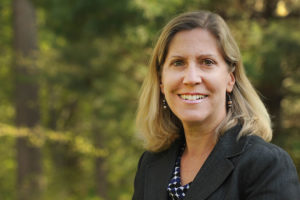 Progressive Voice is a weekly opinion column. The views and opinions expressed in the column are those of the individual authors and do not necessarily reflect the views of their organizations or ARLnow.com.
Progressive Voice is a weekly opinion column. The views and opinions expressed in the column are those of the individual authors and do not necessarily reflect the views of their organizations or ARLnow.com.
By: Abby Raphael
Arlington is one of the wealthiest counties in the nation, with a median 2016 household income of $110,900. Yet 8.8% of all Arlington residents live in poverty, with an income of about $24,000 or less for a family of four. Twelve percent of Arlington’s children live in poverty. Arlington must address the effects of this economic inequality, particularly on our children, in a coordinated way so that all children and families can be successful.
During the last school year, nearly 8,000 students in Arlington Public Schools (APS), 30% of all APS students, were eligible for free or reduced price meals. Families of four with an annual income of about $45,000 or less qualify for this program.
While Arlington students across income levels score well on standardized tests, there remains a relationship between socioeconomic status and achievement that should be addressed. For example, in 2015-16, 71% of economically disadvantaged school students in Arlington passed the English standards of learning tests (SOL), compared with 87% of all Arlington students. For the math SOL, the pass rates were 73% versus 87%.
National efforts to address achievement gaps as part of the No Child Left Behind Act (NCLB) have focused on standardized testing, charter schools, and national standards, known as the Common Core. Diane Ravitch, a former Assistant Secretary of Education and NCLB proponent, concluded in a recent New York Times article that these efforts have failed. Ravitch wrote that one of the main causes of low student achievement is poverty and “[w]hat is called ‘the achievement gap’ is actually an ‘opportunity gap’.”
So, how do we address childhood poverty and the opportunity gap to help all students achieve at higher levels?
First, we must recognize that this is a responsibility of the entire Arlington community and not just APS. Through a shared vision and coordinated efforts of County government, APS, non-profits, businesses, the faith community, and individuals, we can make a real difference. This is the power of collective impact: a model that brings people together in a structured way to achieve positive results.
Community schools, a form of collective impact, bring together school and community resources for children. They integrate academics, health and wellness, social services, and family and community engagement to improve student achievement for all students, especially low-income students. Carlin Springs Elementary School is a community school, supported with federal funding. In addition, Barcroft Elementary School, Gunston Middle School, and Wakefield and Arlington Mill High Schools are community schools, with staffing from Communities in Schools of Northern Virginia, part of the national non-profit network, Communities in Schools (CIS).
CIS was founded 40 years ago by Arlingtonian Bill Milliken, who writes in The Last Dropout that to be successful, students need: “a one-on-one relationship with a caring adult; a safe place to learn and grow; a healthy start and a healthy future; a marketable skill to use upon graduation; and a chance to give back to peers and the community.”
Whether assisted through CIS, federal grants, or other similar programs with track records of success, community schools bring existing community resources together to provide greater opportunities for students and families. National research shows that the community school model works for all of us – improving attendance and performance on standardized tests, reducing behavioral problems, and reducing the dropout rate.
In Arlington, we have many non-profit organizations, faith communities, businesses and individuals partnering with APS and County government that do excellent work to help low-income students. They provide mentors, tutors, food, after-school programs, and more. However, these efforts need to be coordinated in a more systematic way to identify which students have the most need, evaluate what efforts are most effective, and best match the community’s existing resources with those needs.
To best serve our low-income students and families, and to be equitable, Arlington should expand the community school model from five schools that now have it to all schools with significant populations of students eligible for free or reduced price meals. This requires additional staffing to leverage the community’s existing resources, coordinate efforts, establish and monitor measures of success, and communicate effectively.
As APS and County government leaders consider their priorities for the coming budget, I urge them to expand community schools, which have demonstrated effectiveness in improving outcomes for low-income students. Such a strategic investment aimed at economic inequality will benefit the entire community.
Abby Raphael is co-Chair of Arlington’s Project Peace Prevention Committee, which addresses domestic violence and sexual assault. She also serves as a member of the Board of the Arlington YMCA and the Second Chance Advisory Committee. She was a member of the Arlington School Board from 2008-2015, including two terms as Chair, and is a former Arlington Assistant Commonwealth’s Attorney.

